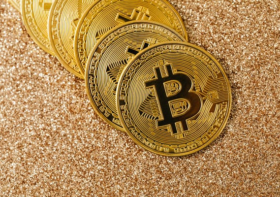NFT – non-interchangeable token

A non-fungible token is a non-interchangeable token that is proof of ownership of a digital object. The latter can be digital or digitized images, single texts or entire books, musical works, game objects and many other things from the digital world that can be copyrighted and need proof of ownership.
Unlike cryptocurrencies and ordinary tokens, which are equal to each other, for example, one bitcoin in Ilon Musk’s wallet is equal to one bitcoin in Peter Sidorov’s asset, the NFT on a musical composition is not equal to a similar one, but already on a digital image. Even in the same category, non-interchangeable tokens will not be identical to each other, because even a painting by the brush of the same artist will be worth different things and may have different art value.
With NFT, the developers were able to solve the main problem in the field of digital rights validation – proof of authorship and ownership. No token from the category of irreplaceable tokens can be copied or forged. Each token contains attestation information that is unique.
The emergence of NFTs
The first experiments in tokenization of digital content began back in 2013. Back then, bitcoin’s distributed ledger was used for recording. With the emergence of ethereum, the work continued on its basis. In 2017, the Larva Labs team released a series of CryptoPunks pixel portraits. They were originally distributed for free, but are now of considerable value, in fact, being a digital antique like the first Ethereum-based NFT.
However, non-interchangeable tokens gained popularity when the CryptoKitties project emerged. In addition to the fact of ownership, these NFTs provide interactive features. Buying two cats, the owner can “breed” them – from the pair appear kittens, which have different degrees of rarity, and, therefore, different values. The owner of the offspring can keep the new tokens or sell them at auction. Additions to existing tokens began to follow, introducing more and more gaming features into the NFT industry.
Currently, there are already many types of digital assets of this type on the market, from Twitter messages, to tabletop collectible game cards. Separately, there are fan tokens that provide access to voting at club meetings.
Standards for tokenization of digital rights objects
Right now, the largest number of non-interchangeable tokens are issued based on the Ethereum distributed blockchain. However, there are several standardized protocols that allow NFT to be transferred between platforms and different blockchains:
- The most popular standard is ERC-721, which is an extension of the base Ethereum standard ERC-20, requiring its own token for each type of contract;
- the currently most actively developing composite standard, ERC-998, which allows different tokens to be combined into a single new product. For example, a game character can be “clothed” in an outfit, creating a new game industry unit;
- For the game industry, the most interesting format is ERC-1155, it allows you to combine in a single smart contract, several types of tokens, both non-exchangeable and ordinary, in addition there is an opportunity to set the rules of exchange. For example, after accumulating a certain amount of one type of material, it can be used to create a tool. The exchange is especially relevant in the gaming industry because of the large number of types of items, in the case of ERC-721 it would be necessary to create a separate contract for each, which is not always convenient.
However, the ethereum blockchain is not limited to the NFT industry. Development is underway and other projects already exist. In the long run, non-interchangeable tokens could be a good way to store content based on a distributed registry.
The future of the NFT industry
Already now, non-interchangeable tokens find their application in a large number of digital content areas. Social media posts, soundtracks and podcasts, 3D models and game characters, movies, series and shows, and domain addresses are sold as NFT.
In February 2021, the NFT turnover market almost reached half a billion dollars a month. Interest was expressed not only by the crypto community, but also by political and public figures, artists, writers and musicians who had not previously interacted much with the world of distributed assets. Tweets, paintings and musical works could reach a value of several million dollars in a matter of hours, and on March 11 this year, the British auction house Christie’s managed to sell the NFT artist Beeple for $69.3 million, which was a record for the non-mutually exchangeable token industry.


